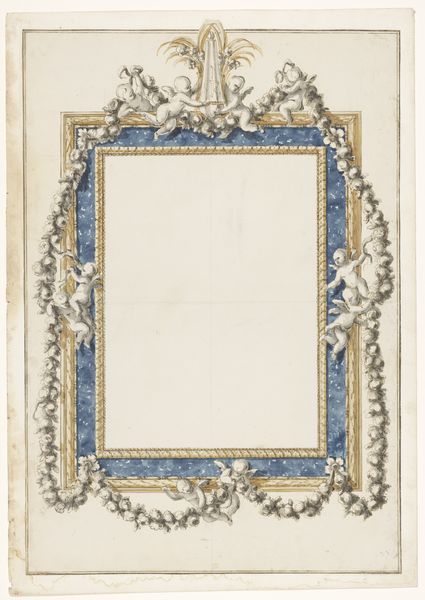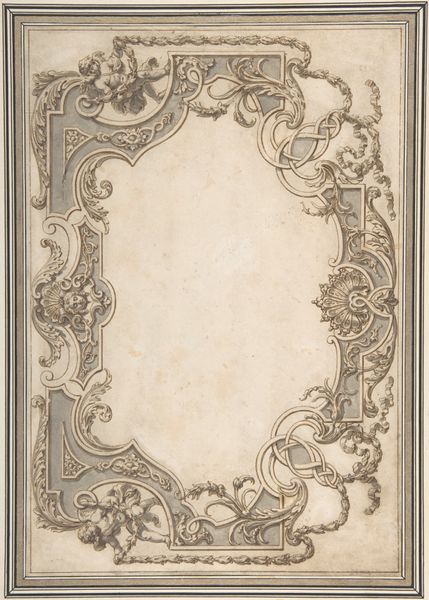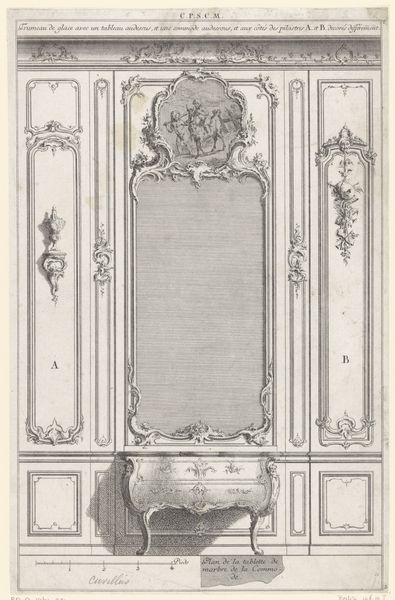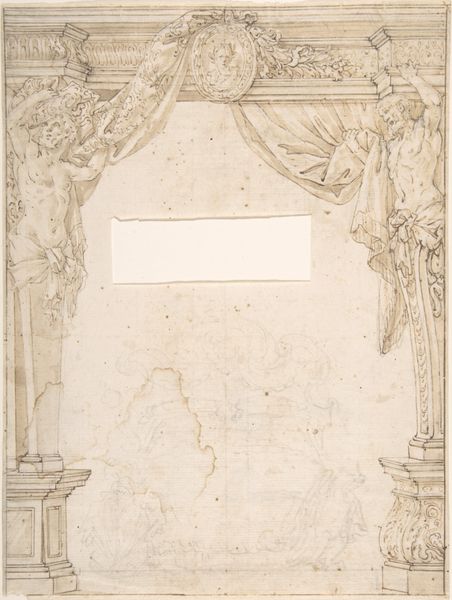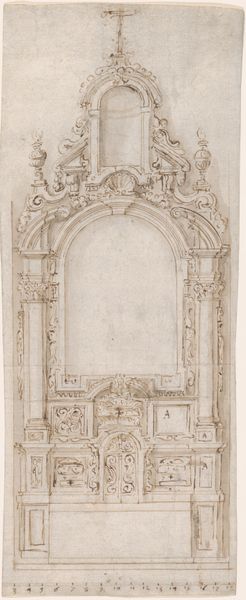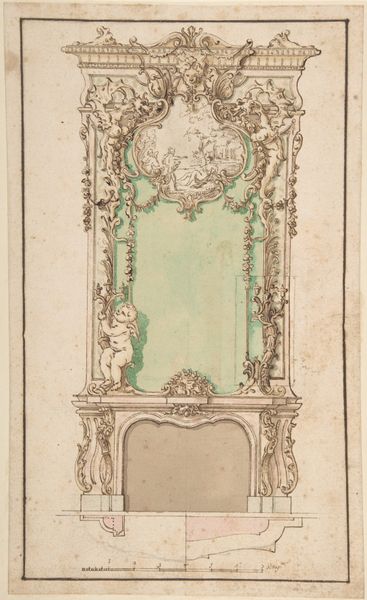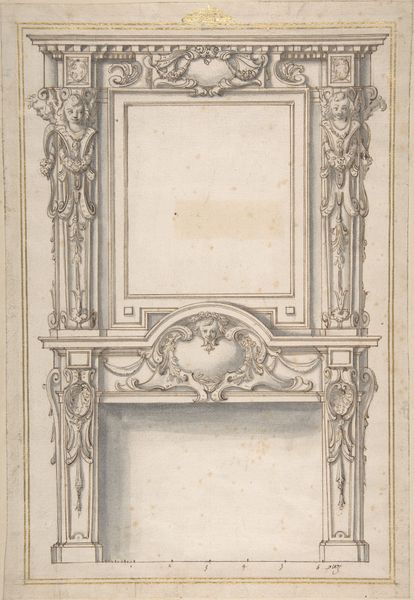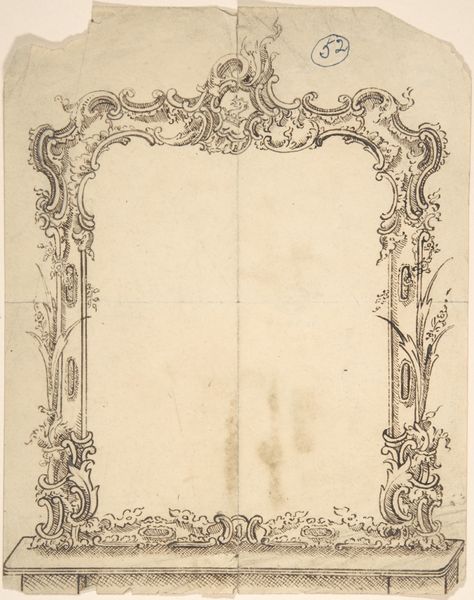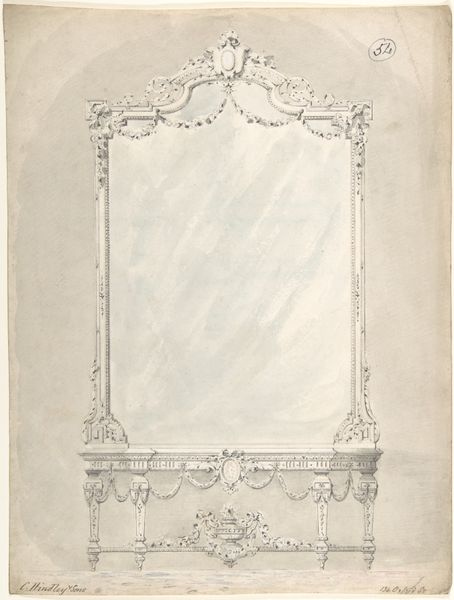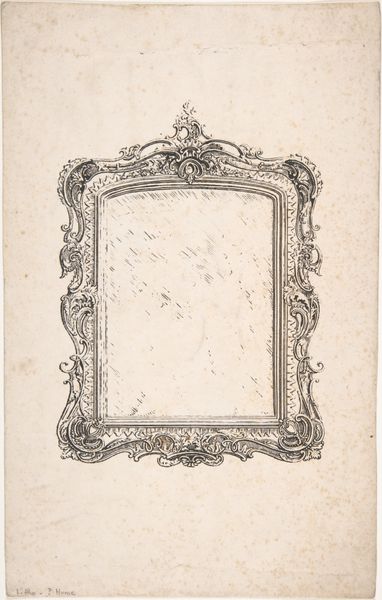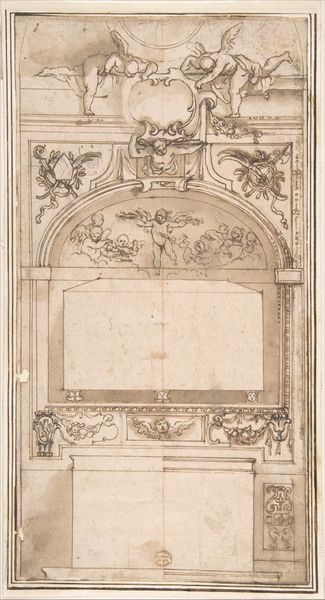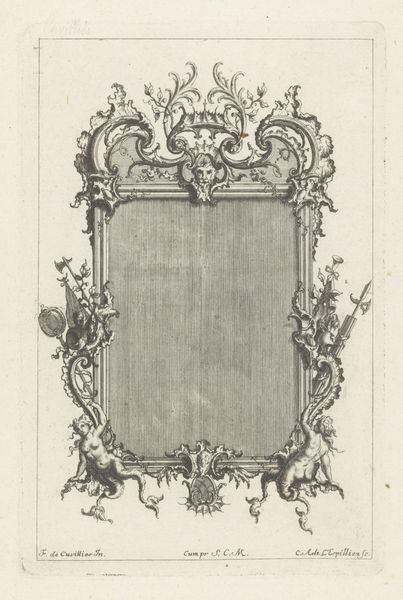
Design for the Frame of a Funerary Plaque with the Coat of Arms of Roger II de Saint Lary, Duc de Bellegarde 1614 - 1624
0:00
0:00
drawing, print, paper, watercolor
#
drawing
# print
#
light earthy tone
#
paper
#
form
#
11_renaissance
#
watercolor
#
geometric
#
line
#
history-painting
#
academic-art
#
watercolor
Dimensions: 18 1/16 x 12 3/16 in. (45.8 x 31 cm)
Copyright: Public Domain
Curator: What a find. This is a design for a funerary plaque. Its intended use, sadly, already sets a melancholy tone. The plaque includes the coat of arms for Roger II de Saint Lary, Duc de Bellegarde. It was made sometime between 1614 and 1624, and the artist was Etienne Martellange. Editor: It does feel somber, a real sense of heavy ornamentation meant to last an eternity. You can almost smell the stone dust from its carving, even in watercolor. It also suggests some rigid conventions of power at the time, not just about artistic license. Curator: Precisely! The meticulous rendering of the heraldic symbols screams about social status and dynasty. But what I adore is how Martellange allows for a personal expression amidst all that officialdom, the light wash giving it almost a dreamlike quality. Editor: Watercolor, right. On paper, though, right? I wonder about its material significance. Think about the relationship between this delicate medium and the robust nature of stone it was probably intended to replicate, especially concerning labor conditions to translate the design, which emphasizes the relationship between hand production and intellectual concepts. Curator: Absolutely! You bring out an essential point about translation and skill, laboring to bring such a transient, painterly idea into such permanent form. It gives me pause when I realize I’m essentially pondering death framed by a gorgeous artistic interpretation *of* labor. The angels feel very appropriate all of a sudden! Editor: Thinking of it as an item of aristocratic consumption, as opposed to a spiritual item, maybe demystifies it and connects it back to ordinary human motivations? What drives consumption now, compared to then, as viewed through design and art? Curator: Hmmm. So, what are we consuming now when we ponder death through our screens and digital avatars? That changes how we remember, how we mourn. A watercolor sketch from centuries ago still echoes questions. And that I think is no small feat. Editor: A fair point to think about and something of an emotional through-line from the piece itself, with a contemporary take. The conversation alone makes me reconsider all the implicit biases loaded on something seemingly historical, but also strangely relatable.
Comments
No comments
Be the first to comment and join the conversation on the ultimate creative platform.
